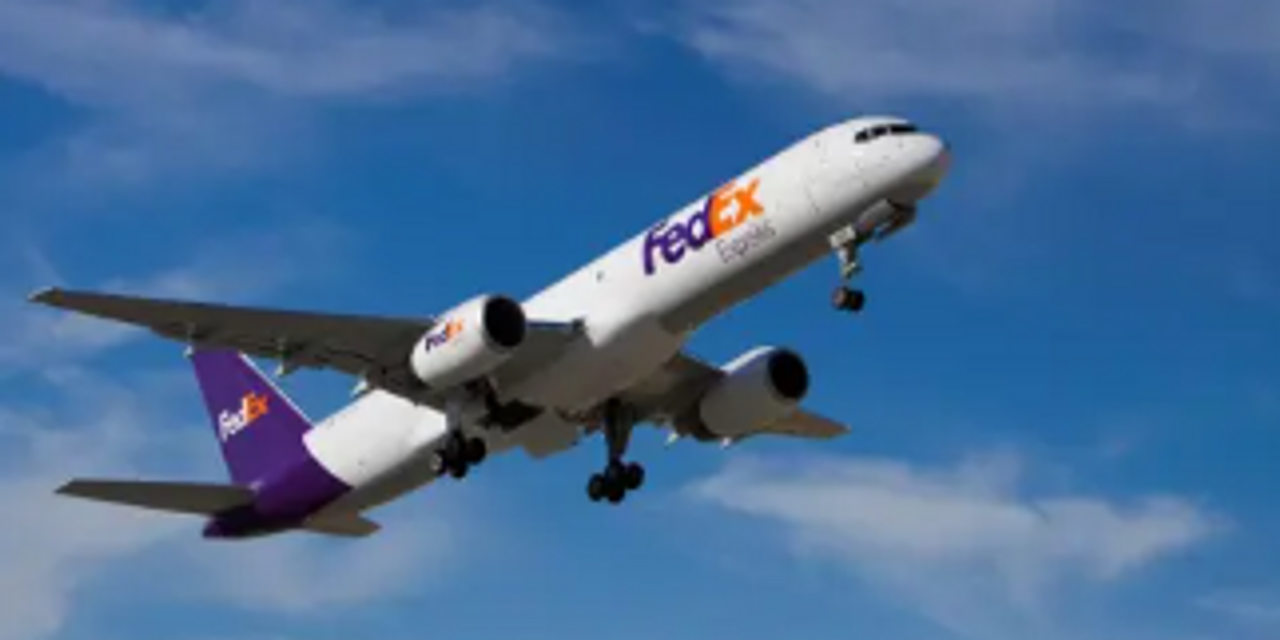Since September, shares of FedEx Corp. have been on an upswing, rolling higher after the past two earnings reports, as the package deliverer’s efforts to cut billions in costs helped investors move past lagging consumer demand. But on Tuesday, the bottom-line gains the company said it expected from its moves to get leaner weren’t enough for Wall Street.
Shares of FedEx
FDX,
slid after hours on Tuesday after management offered up a full-year profit forecast that fell short of analysts’ expectations, and the company pointed to weaker demand in the months ahead, as inflation hangs on and forces customers to rethink their spending priorities.
Not long after the company released those results, FedEx also said
FDX,
that Chief Financial Officer Michael Lenz would retire on July 31. Management said it had begun an external search to fill the position. Lenz, who became CFO in March 2020, will serve as a senior adviser until Dec. 31 to help with the changeover.
“We’re entering fiscal 2024 with a continued focus on areas within our control and a commitment to execute swiftly on our priorities,” Chief Executive Raj Subramaniam said during the company’s earnings conference call with Wall Street analysts. “This focus will support sustained profit improvement in FY 2024 through an environment that we expect to remain marked by demand challenges, particularly in the first half.”
Shares fell 3% after hours on Tuesday.
For the fiscal year ahead, which ends next May, FedEx forecast “flat to low-single-digit-percent” growth in sales, with earnings per share of $16.50 to $18.50. The company said it expects permanent reductions from its cost-cutting program — which it calls “DRIVE” — of $1.8 billion.
For the full year, analysts expected FedEx to earn $18.33 a share, on $90.91 billion in sales. FedEx ended its most recent fiscal year with $90.2 billion in sales.
“While some investors were pessimistic about FDX’s guide going into the print, we believe most were expecting FDX to at least guide in line with consensus at the mid-point,” Stephens analyst Jack Atkins said in a research note on Tuesday.
FedEx has tried to slash at least $4 billion in costs by the end of its fiscal 2025, amid slowing demand for package deliveries. In the process, the delivery service’s stock price has rebounded since getting slammed in September, when it warned of a slowdown that was seen as a proxy for the rest of the U.S. economy. It has nudged shipping prices higher, cut flights, cut executive jobs and closed offices. In April, FedEx announced plans to consolidate its air and ground operations into a single organization.
The company reported fourth-quarter net income of $1.54 billion, or $6.05 a share, compared with $558 million, or $2.13 a share, in the same quarter last year. Revenue fell to $21.9 billion, compared with $24.4 billion in the prior-year quarter.
Adjusted for goodwill, efforts to make the business leaner and a legal issue within FedEx’s
FDX,
ground delivery operations, FedEx earned $4.94 a share, compared with $6.87 a year ago.
Analysts polled by FactSet expected adjusted earnings per share of $4.85, on revenue of $22.55 billion.
“The quarter’s results were negatively affected by continued demand weakness and cost inflation, partially offset by cost-reduction actions and U.S. domestic package yield improvement,” management said in a statement.
The company also reported earnings amid other tensions within the nation’s shipping and transportation infrastructure, after online-shopping demand during the pandemic led to higher shipping prices and thus a surge in profits.
While West Coast dockworkers and their employers reached a tentative deal on a contract last week, Teamsters union members at FedEx’s main rival, United Parcel Service Inc.
UPS,
voted to authorize a strike if UPS doesn’t offer them a contract they don’t like. The friction has led to worries that businesses and customers would have to pay more to have products delivered.
Read the full article here













